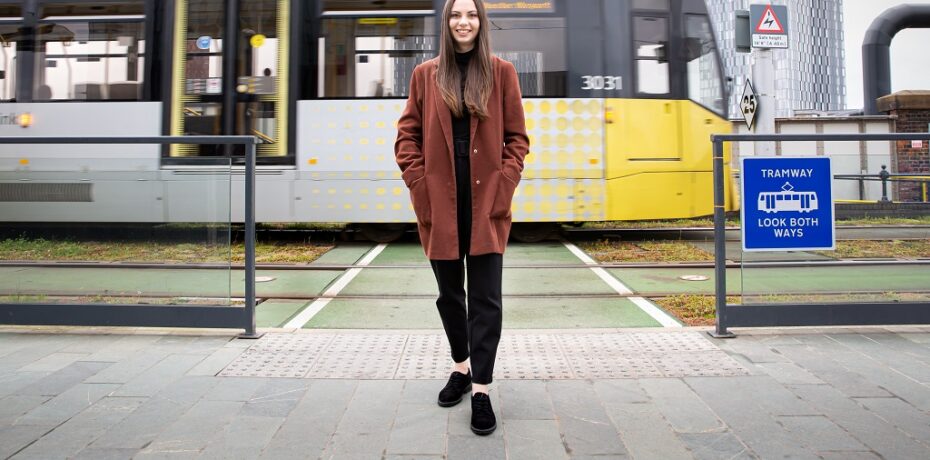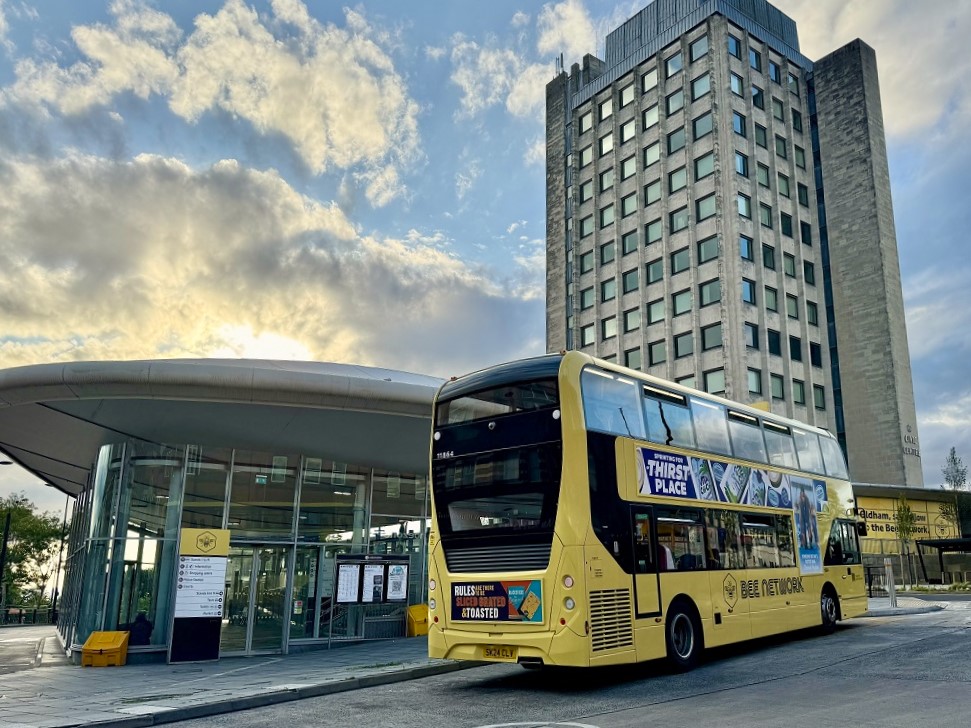Commentary
COMMENT | Sliding doors moment: changing transport behaviour
In this latest instalment of Hydrock’s series on the changing nature of place and communities, graduate transport planner Sophie Gittins examines how our changing behaviour is presenting the need for transport planners to think ahead.
It’s a mild morning at rush hour at Oxford Road station. It’s strangely quiet for Manchester in early December. Normally it would be customary for crowds of people to be battling each other, as well as their umbrellas and fighting for the path of least resistance.
I’m missing that gentle hum of people scuttling into the city centre for work or university. To top up my student loans, I used to work in Java, an independent coffee house on the corner that leads up to the station ‒ I’d recognise the same faces that popped in each day for their first cup of bean in the morning. Looking back, those passing coffee-deep conversations had a longer-lasting impact than I realised.
Funnily enough, my first taste of urban planning came via a regular customer who offered me a work experience role after we shared a similar passion for geography over a latte. After this, I started to think about my career prospects and where it might lead once I hung up the barista apron.
My future suddenly became clearer while travelling during a study-abroad year, where I experienced how different cities across the world had moved forward with innovation in the planning sector. It was during this journey across the provinces of Canada that my interest in the human element of geography was reaffirmed ‒ and I jumped at the chance to join Hydrock as a graduate in September last year.
I’m fascinated by the inextricable links between urban planning indicators, environmental exposure and personal behaviour.
More than three quarters of the UK’s population live in urban areas. Traffic has long been the bane of many a town and city. As a stimulator of urban growth, it has become an obstacle to future development and public mobility. This just goes to show that well-designed and efficient urban transport systems are essential for cities and their people to thrive.
Cities often suffer because the professionals that are responsible for their evolution are working in silos – urban planners, mobility and transport planners, property developers, environmental departments. Getting them to work together is essential to futureproofing projects.
A fundamental part of our justification for the highways impact of a new development involves the input of valid traffic survey data to enable us to assess current traffic conditions and analyse the impact of a new development on the local highway network.
At this moment in time, Covid-19 has made this hugely challenging as we are experiencing changing travel behaviours, whether public or private transport. It has proved challenging for several projects that Hydrock’s transport planning team have been working on. Local authorities are now thinking differently about new developments, including considerations into the required widths of pedestrian pavements to allow for social distancing and creating more connected cycle route strategies. Our team has been supporting such proposals with the use of in-house VISSIM, which provides complex multi-modal traffic flow modelling.
How our society reintegrates with our city centres post pandemic is going to be really interesting. People have missed the bars, cafes and freedom to shop without restrictions. But clearly many of us have also grown to enjoy exploring our local green spaces and the temporary breather from noise, pollution and congestion.
There are questions worth raising about whether demand for public transport will change ‒ and I anticipate alterations to how people choose to travel around city centres. Will provision for public transport increase in response to fear of overcrowding? Will commuters choose to travel by single occupancy car journeys as a response to this fear, ultimately creating negative side effects for resourcing and pollution?
What we have now is a huge opportunity to redesign transport systems in response to a shift in behaviours and mindsets. Being able to think ahead is going to be key to taking advantage of that. City influencers and planners are already thinking smarter. Around the world, there is talk of decentralised mini hubs, ecologically transformed neighbourhoods, more flexible working spaces and wider use of technology to communicate.
The pandemic has presented a challenge that many of us are having to face for the first time and are working hard to find creative solutions to help overcome. For me, it has been eye-opening.
In truth, as a junior member of the team, at the earliest stages of my career, this year’s been tough. But with the help of an extremely supportive team, I’ve been able to get through this and I’m stronger for it. I’ve achieved a few personal career milestones this year, solidifying that decision made thousands of miles away.
And now I’m about to end my first ever commentary article with optimism… Covid-19 may have momentarily put the handbrake on Manchester’s bustling, fast-paced envir onment, but when we get over these challenging times, I’m looking forward to a future which promises a greener, more social, more active and healthier city.
onment, but when we get over these challenging times, I’m looking forward to a future which promises a greener, more social, more active and healthier city.
- Sophie Gittins is graduate transport planner at Hydrock






Great article Sophie, well observed and written. Look forward to your next insight.
By Andrew Bayley
Great article Sophie. Some fascinating questions on the post-pandemic world.
By Brian McConnell
Fundamentally people are irrational consumers who will make daft choices. Planners – and by this I mean spatial and transport planners working as a team – need to design out car dependency from the outset, to stop irrational choices becoming entrenched.
By Noam BLEICHER
Brilliant article Sophie, well done. Indeed the year has been challenging, but I too am hopeful. Mobility and accessibility of urban areas is at an exciting turning point. We talk about public transport with a downbeat tone, but what can public hire e-scooters and bikes do to change this? A scooter that is readily available, to be picked up locally, to deliver me to where I want to be at low cost, using minimal energy, emitting no emissions, but best of all, putting a smile on my face. I’m excited!
By Chris Bowie-Hill